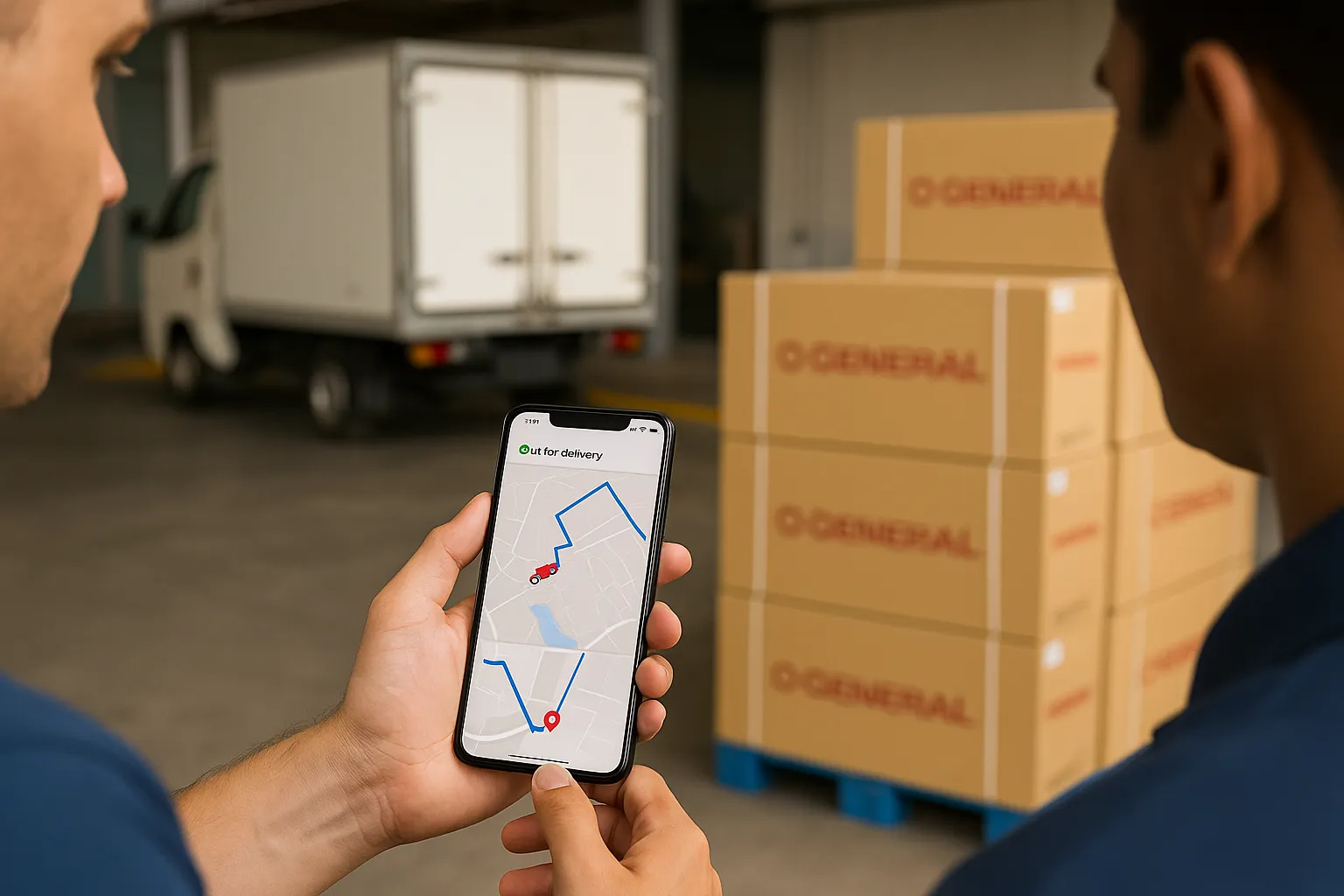How order tracking usually works for O General ACs in the UAE
If you’ve ever waited on an appliance delivery—especially something as large and schedule-sensitive as an air conditioning unit—you know the value of solid tracking information. In the UAE the path from order to installation typically passes through several hands: the manufacturer or regional importer, an authorized supplier or dealer, customs (for imported stock), a local warehouse, and finally the last-mile delivery partner. Each stage can provide tracking data, but the visibility you actually get depends on which partner is handling your purchase.
When I coordinate HVAC deliveries for projects, the first thing I ask the supplier is whether they provide an AWB (Air Waybill), bill of lading, or courier tracking reference. That single number transforms vague “on the way” updates into precise checkpoints: port arrival, customs release, warehouse receipt, and the driver’s route. Larger, established suppliers often integrate courier APIs into their customer portals so you can follow the truck in real time; smaller dealers may rely on manual SMS updates. If you prefer digital visibility from the start, consider buying from reputed suppliers who list logistics capabilities upfront and provide account managers to handle updates and exceptions.
Who provides tracking: suppliers, dealers, and 3PL partners
The party that sold you the AC is your primary source for tracking details, but it helps to know the typical divisions of responsibility. An authorized supplier will usually handle import documentation, customs clearance, and warehousing. For example, a national partner like an experienced O General ac supplier will often provide both the shipping reference and last-mile tracking link so you can monitor the unit from port to site. If your order is large or part of a commercial project, the supplier may consolidate multiple POs and give you a consolidated manifest with shipment references for each line item.
On the other hand, an O General ac dealer—often the local face of the brand—may manage everything from order confirmation to installation and after-sales service. Dealers commonly work with local couriers or their own delivery fleets and will provide driver contact details and an estimated delivery window. If you want the smoothest experience, choose a dealer or supplier that offers a single point of contact and clear escalation channels for missed or damaged deliveries.
If your supplier uses a third-party logistics (3PL) partner, you’ll usually receive either the 3PL’s tracking link or a direct AWB number you can enter on the courier’s website. For high-value or time-sensitive projects, hiring a 3PL to consolidate and manage multiple inbound shipments can be a game-changer, giving you a single dashboard to see everything coming into your site.
What information you should request immediately after ordering
Right after your order is confirmed, ask the supplier for three things: the order or PO number, the shipment reference (AWB or bill of lading), and the contact details for the logistics coordinator. With these, you can set up alerts and establish responsibility lines. If the supplier is handling cross-border shipping, request the HS code and expected customs clearance timeline—these details matter if you’re working against a tight installation schedule.
If you bought from an online supplier, check whether they provide a customer portal. Reputable platforms allow you to log in and view the order lifecycle: confirmation, allocation, dispatch, and delivery. For example, established websites for regional HVAC sourcing often show inventory status and provide tracking links once the order leaves the warehouse. If your supplier hasn’t shared an AWB, politely insist on at least a written dispatch and arrival window—this helps you coordinate installers and site access.
How to use tracking data to coordinate installation and crews
A tracked delivery does more than reduce anxiety; it enables precise scheduling. When a driver can give you a two-hour arrival window, you can align the installation crew, reserve elevators in a high-rise, or arrange gate passes for communal developments. On large residential or commercial jobs I manage, I require suppliers to confirm delivery windows at least 48 hours in advance. That allows us to book crane lifts (if needed), ensure clear access to the service riser, and avoid double-handling that can add cost.
Another useful practice is to request proof-of-delivery (POD) documents and serial numbers upon arrival. PODs protect both buyer and supplier in the event of damage or missing items. If you supervise multiple sites, ask the supplier whether they can deliver photographic evidence of drop-off or upload signed delivery notes to a shared project folder. This small administrative step saves time during claims and warranty activation.
Common tracking problems and practical fixes
Even with tracking, issues happen. Sometimes the tracking status stalls because the local courier hasn’t scanned the package. Other times, the unit is held in customs because of an incorrect invoice detail. My go-to fixes are simple and practical: first, escalate to the supplier’s logistics coordinator and ask for the last scanned location and the courier’s contact. If the issue is customs, provide any missing documentation immediately (commercial invoice, import license, or certificate of origin) and request a customs broker escalation.
Mismatched delivery details are another frequent cause of delay. High-rise addresses, restricted community gates, and missing contact numbers are common culprits. To avoid this, always reconfirm the delivery address in writing and provide a secondary contact and site access instructions. If the supplier knows a delivery is for a complex such as a gated villa community or a hospital, they should route the driver with permit details; insist on that at the time of order.
When and how to escalate a tracking failure
If tracking shows no movement for an extended period, or if a delivery arrives damaged or with wrong serial numbers, document everything immediately. Take photos before signing the delivery note, and ensure the driver annotates any discrepancies. Then escalate to the supplier’s claims or service desk—authorized suppliers and dealers will generally act quickly to replace damaged goods or correct serial number errors because their warranty agreements depend on it.
For urgent project requirements, request a temporary swap or loaner while the replacement is arranged; many reputable dealers and larger suppliers maintain loan stock for emergencies. If the supplier resists, refer to your purchase agreement or warranty terms and request a timeline for resolution in writing. Having everything in writing speeds up outcomes and gives you leverage when project timelines are tight.
Choosing the right supplier to maximize tracking and support
Not all suppliers are equal when it comes to logistics transparency. If tracking and delivery reliability matter to you, vet potential partners on three criteria: digital visibility (customer portal and tracking links), communication (single point of contact and proactive updates), and service-level guarantees (delivery windows, installation packages, and claims handling). There are established suppliers and online partners active in the UAE market who advertise these capabilities; take time to confirm their logistics processes and read customer testimonials.
If you’re considering suppliers, compare options and ask specific questions about how they handle large orders, customs clearance, and last-mile delivery. For example, one supplier may offer integrated delivery and installation packages for project buyers, while another may provide only warehouse pickup and leave transport to your team. Understanding these differences upfront prevents surprises later.
A real-world example: coordinating deliveries across multiple sites
Recently I managed AC deliveries for a property developer with several show homes and a sales office. We ordered different unit sizes and scheduled staggered deliveries to match each site’s readiness. The supplier provided AWB numbers for each batch, and the courier offered two-hour delivery windows. Because we had tracked the shipments, we could phase our installation crews efficiently, avoid storage charges, and ensure serial numbers were recorded for warranty registration. When one pallet was held up in customs for a day, the supplier immediately provided photos and documentation so we could replan installations without costly idle labor.
This kind of predictability doesn’t happen by accident; it depends on picking a supplier that values logistics transparency and assigning a dedicated account manager to your project. If you need a quick reference point to compare service offerings and logistics support, reputable online suppliers often list their delivery capabilities and account contact procedures up front.
Final tips to ensure smooth tracking and delivery
Before you place the order, confirm the supplier’s exact process for sharing tracking information and PODs. Get the AWB or shipment references as soon as they’re available, and confirm site access rules (gate passes, delivery hours, elevator bookings). If you have multiple deliveries, ask the supplier whether they can consolidate tracking into one dashboard or provide consolidated manifests. Keep all shipment-related documentation in a shared project folder and require the installation team to check serial numbers and upload signed delivery notes immediately after drop-off.
If you’re still deciding between suppliers, reach out to a few and ask for a sample workflow: how they will confirm dispatch, what tracking links they will share, and who your point of contact will be. Suppliers that can give you a clear logistics plan in writing are the ones that will save you time and headaches once the units arrive.
Quick supplier resources to check
When looking for partners who reliably provide tracking and logistics support in the UAE, it pays to compare established suppliers and authorized dealers. Two regional suppliers that list logistics and sourcing services online are accessible for quick outreach: one is a Dubai-based supplier that often supports large projects, and another is an O General-focused supplier portal that lists dealers and logistics capabilities. If you need dealer-level support that includes installation and warranty coordination, check O General’s dealer listings to confirm authorized service partners.
For example, you can compare suppliers and reach out to confirm specific tracking workflows through this regional supplier: O General ac supplier. Another established option for sourcing and dealer information is O General ac supplier, and if you need local dealer support and installation coordination, the O General ac dealer listing on the same portal can point you to authorized local teams who manage delivery and after-sales.
Conclusion
Yes—you can generally track your O General AC order in the UAE, but the degree of visibility depends on who you buy from and how they manage logistics. For the best results, buy from suppliers or dealers that provide AWB or shipment references, maintain customer portals or proactive communication, and offer dedicated account managers. Request the right references up front, confirm site access details, and insist on proof-of-delivery and serial-number documentation on arrival. With those practices in place you’ll minimize delays, protect warranties, and keep your installation teams productive.




